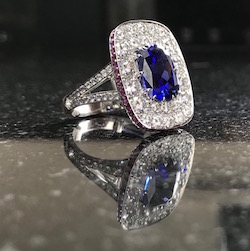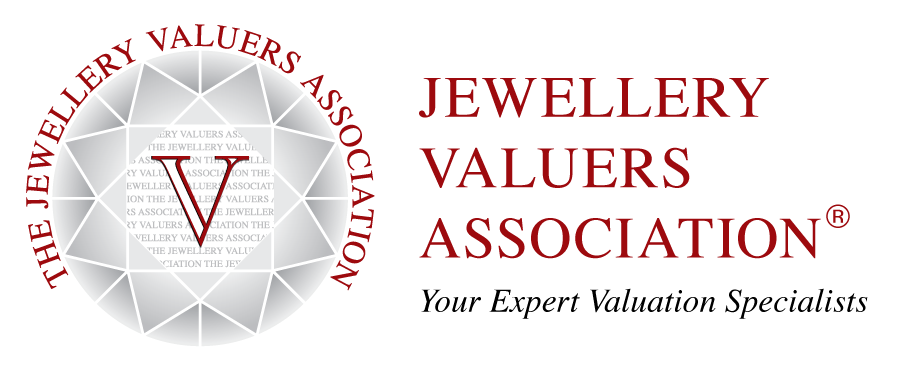Clare Blatherwick FGA DGA SJVA
One of the things I am most often asked by my clients is ‘Why do I need an insurance valuation of my jewellery?’.
The simple answer is, when you insure your jewellery, which is something I, alongside the Jewellery Valuers Association, would wholeheartedly advocate as the best way to protect your piece in case of damage, theft or loss, your insurer will require a valuation document.
If you have to make a claim, it is crucial you and your insurer have had a professional jewellery valuer who is affiliated with an organisation like the Jewellery Valuers Association, examine your jewellery and watches in person and you are in possession of a document giving specific details of each piece and noting how the value has been determined. Many insurers will advise you of a figure below which they do not require a piece to be listed on a valuation, but it is often prudent to have all items of significance listed to avoid any difficulties should loss or damage occur in the future. Lower value items can be grouped together, and an overall value allotted to them. Without a valuation document being present, insurers can ask you to acquire a post-loss assessment which, whilst possible to undertake, can be a costly, time consuming, and stressful process and which can lead to an under assessment of the value.
It is important to keep your valuation up to date - most insurers and brokers recommend an update every 3 to 5 years and that is especially important given the circumstance of the current jewellery market where we are seeing the growth of interest, and thus value in several areas that people may not be aware of. This growth is the result of several factors examined in more detail below.
Inevitably Covid-19 has had an impact on the global jewellery market and the auction houses - but perhaps not in the way people might first assume. As happened in the 2008 financial crisis, market nervousness resulted in a lack of quality goods hitting the marketplace, which inevitably led to the balance of supply and demand becoming skewed and as a result, record prices being paid at auction for desirable and rare lots. A Cartier ‘Tutti Frutti’ bracelet made headlines when it broke the record for the highest value jewel sold in an online only auction, right in the midst of a near global lockdown. In times like this we can even see pieces that would have struggled before the crisis in question perform better than expected. Anecdotally, across the trade, we hear stories of people needing ‘cheer up’ presents for themselves or family members and money that once would have been used for a holiday being redirected into a jewellery purchase.

Other factors include the phenomenon of the pre-coronavirus jewellery exhibition in major galleries and museums has undoubtedly altered the profile of jewellery, from commodity, to over and above that, miniature works of art.
In addition, the growth of the Chinese market as well as the power wielded by other Middle Eastern, Asian and South East Asian buyers are influencing values in particular areas of the market that are of interest to them such as unheated, untreated gemstones and gemstones from specific geographical origins. Many gemstones are routinely treated with long term stable treatments to improve things like their colour and clarity and have been for many decades. Rubies and sapphires are a prime example, with at least 90%, possibly even 95% of those in the new market having been treated. Those that haven’t been treated and have an ideal colour and clarity are therefore very rare and have increased in value with the growing demand of connoisseurs and collectors. This means that people who may have inherited jewels that predate this type of treatment (say Victorian jewels or earlier) could be unaware in the uplift in value of their jewels in the last five years or so. In terms of origin, collectors are aggressively pursuing Burmese rubies, Kashmir and Burmese sapphires and Columbian emeralds. If a client has a ruby, sapphire or emerald, seeing a specialist jewellery valuer to discuss this would be wise in the current market.
Other gemstones that we may not think are particularly valuable, for instance those that get referred to as ‘semi-precious’ are in certain circumstances, increasing in value too. For example, amber, spinels and natural pearls have become desirable again after around a hundred years of being relatively modestly priced and many people will have their grandmother’s sitting in the back of their jewellery box, utterly unaware of the value.
In addition, the gold price has increased dramatically over the last couple of years and smashed records when it reached over £1,570oz in August 2020. At the time of writing, we are hovering around £1,470oz and this time two years ago the price was only around £960oz! Accordingly, I’d recommend clients with gold jewellery should have this reassessed regularly so that they are not under (or over) insured.
Pieces made by British designers of the 60s and 70s such as Andrew Grima, John Donald, Kutchinsky and Charles de Temple had fallen out of fashion for many years but are now incredibly collectible and have seen a significant uplift in value. Of course, the big designer names, such as Cartier, are always of importance and I think there is a general awareness of that but there may not be around this other, more recent, collecting area. Many of my clients received a 21st birthday present of works by these designers and haven’t worn them in years, not realising they are now ‘cool’ again and that they should be thinking of them as more than a lump of textured scrap gold! Check for those signatures.
One of the most important messages that we valuers can impart to our retail clients or private clients is that not all valuation documents are considered equal, or indeed will be accepted by an insurer, or will be settled upon in the event of making a claim if the insurer does not give merit to the valuer (for example, if they are not affiliated to the Jewellery Valuers Association) or the method by which it was undertaken (for example, valued online or sight unseen). As with anything, quality is key and when corners are cut, for example, if a client is unwilling to pay professional level fees to a professional valuer and chooses a cheaper option, then problems can arise when that same client faces an insurer who does not rate the validity of the document in front of them. A couple of months ago a client showed me a fairly recent valuation for a diamond brooch that had a one-line description and a value of £3,000 attached to it. I revalued the piece, provided a full description, assessed the stones, etc., and attached a fully researched and entirely justifiable Antique Replacement Value of £9,000 to it. The money they’d saved by using the ‘valuer’ they did suddenly didn’t feel like such good value after all.
If you have jewellery you feel may be underinsured and would like some advice about valuing, please visit our Find a Valuer section on the website to locate your nearest JVA Registered Valuer®.
